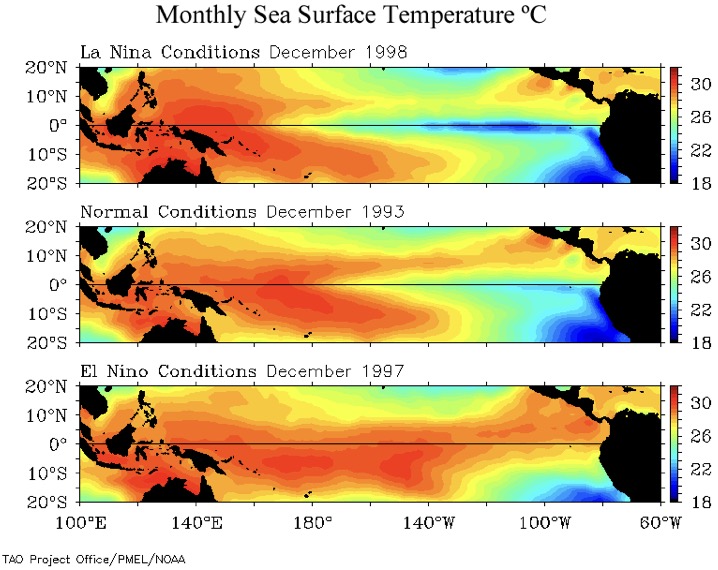The La Nina phenomenon was determined by the US National Oceanic and Atmospheric Administration (NOAA) to appear from January 2025. Over the past month, sea surface temperatures in the equatorial Pacific have remained below average.
"Weak La Nina conditions will continue throughout February to April and then transition to a neutral ENSO state. The weak La Nina phenomenon is unlikely to cause normal impacts for the winter-spring season," NOAA said in its latest update on La Nina.
El Nino - Southern Oscillation (ENSO) is a natural phenomenon in which the sea surface temperature in the equatorial Pacific Ocean is warmer than normal ( El Nino), neutral or cooler than normal (La Nima). ENSO affects global weather and could lead to extreme climate change.
Initially, as soon as La Nina appeared, many weather forecasters around the world predicted that this La Nina cycle would be short and weak.
If it is set up as predicted, ENSO's neutral conditions (sometimes known as La Nada) are expected to persist in the June-September period of this year, the Indian Express said.

Meanwhile, CDA Press on February 17 pointed out that NOAA confirmed that La Nina conditions are present but the Australian Bureau of Meteorology has not yet officially confirmed the formation of the phenomenon.
The Australian Bureau of Meteorology said that if La Nina conditions persist into March, it will officially announce the formation of La Nina. This will be the 4th official La Nina in 5 years confirmed by the Australian Bureau of Meteorology.
Typically, La Nina forms in the summer in the Northern Hemisphere or winter in the Southern Hemisphere. Of which, La Nina typically peaks in late fall and then weakens in late winter.
However, according to NOAA, the current La Nina is the second time in 75 years that it has occurred in mid-winter rather than mid- Summers in the Northern Hemisphere.
According to the latest computer forecast models, the phenomenon of cold sea water taking place this time will not last long. By summer, sea surface temperatures are expected to start warming up.
At that time, the new La Nada phenomenon - a neutral state between colder La Nina phenomenon and warmer El Nino phenomenon - will take over.
With the La Nada phenomenon expected to occur throughout this summer and last until the fall, it is still unclear whether the ocean will warm up by the end of the year.
According to many computer forecast models, La Nada is likely to continue until the end of this year and the beginning of 2026. However, there are also some forecasts that point to the possibility of an El Nino phenomenon appearing by the end of the year.
For their part, Fox News weather forecasters have recently said that there is a high chance of global weather models, including the possibility of an El Nino forming or a double La Nina phenomenon - that is, La Nina reappearing in late 2025 or early 2026.











